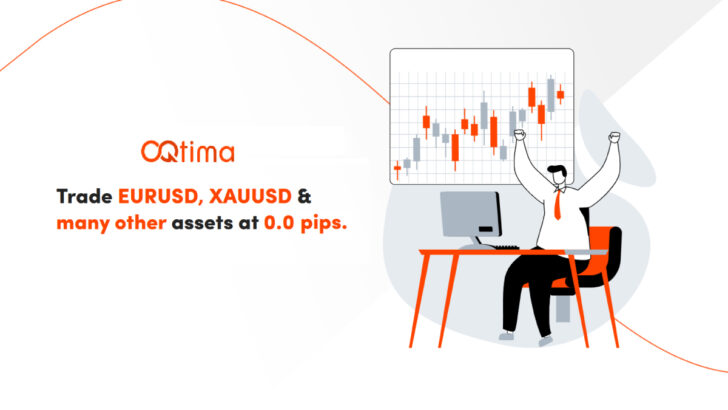Trade with the Fixed Spread during any liquidity or volatility situations
Discover how easyMarkets’ fixed spreads provide stability and transparency in trading, even during extreme forex market volatility.


easyMarkets offers fixed spreads that remain stable regardless of market volatility, making them ideal for trading during unpredictable conditions such as news events or major market shifts. This provides traders with clarity and consistency in their trading costs, unlike variable spreads which can fluctuate significantly. The article explains how market volatility and “ascendant waves” occur due to the interaction between supply and demand among buyers and sellers. It also highlights the seasonality of the forex market, with volatility varying across time zones and specific days or months. Traders are advised to consider both daily and seasonal market patterns when planning their strategies.
Why Fixed Spreads with easyMarkets Are Ideal During Forex Market Volatility
Trade confidently during any market condition with easyMarkets’ fixed spreads—no surprises, just stability.
| Topic | Key Details |
|---|---|
| Fixed Spreads | Remain stable regardless of volatility; ideal for news trading and volatile markets. |
| Market Volatility | Occurs due to changing demand and supply; influenced by news, traders’ behavior, and time zones. |
| Ascendant Wave | Formed when increasing demand pushes prices up; a key example of price action. |
| Trading Sessions | Market is most volatile during overlapping regional trading hours (e.g., London & New York). |
| Seasonal Patterns | Midweek and mid-month see higher volatility; summer often has weaker activity due to holidays. |
easyMarkets’ Fixed Spread vs Market Volatility
Fixed spreads help traders know their bottom line i.e. their spread cost, regardless of market conditions. No matter what the market’s liquidity or volatility is, easyMarkets spreads remain stable. Even during Bitcoin’s historic bull run, when it reached $20,000 – easyMarkets not only continued offering the cryptocurrency but kept its spreads unchanged.
Volatility in the forex market has become commonplace and isn’t limited to news events. While variable spreads may be beneficial during quieter market times, fixed spreads are ideal for volatile market conditions5, which just also happen to potentially provide more opportunities to take advantage of.
Unfortunately, variable spread accounts can make news trading very confusing because of how wide the bid and ask fluctuate. By using a fixed spread, traders may approach news trading as they would any other market condition.
Trade with easyMarkets’ Fixed Spread
Volatility and Seasonality in Forex Markets
Volatility is the ability of the current price to change. When the market is flooded with sufficient demand and supply, price volatility is highlighted. Foreign exchange market transactions are constantly changing the trend of currency prices (for example: if all sellers’ orders are bought at the price of 1.37541, it will cause the buy price (Ask) to rise until new sellers appear, such as at 1.27542. price). So in general, the wave of the price depends on the mutual game between buyers and sellers.
Invest in Forex with easyMarkets
Ascendant Wave
Next, let’s look at a simple example of how a market wave is formed and why it occurs. (Here we want to be clear, in fact, the formation of market waves, in reality, is more complicated than our example. Our task now is to introduce the volatility of the market with the help of a simple model. If you want to learn more about the stages of market waves in detail, you can find volatility analysis and Elliott wave theory in the recommended literature) First in the example, you can find a supply and demand equilibrium price at 1.37500. Suppose there is a new buyer in the market at this time.
These sellers place their buy orders (long positions) and demand increases accordingly. Each buy order results in a small increase in price, and if there are many such long positions in the market, the price will continue to increase. At this point, other traders will see the price climb on their monitors and think that the uptrend has begun. Then traders who got this information immediately turned into buyers and bought at the current price. That’s how rising market demand begins to push prices up. Such a phenomenon is also known as an “Ascendant Wave”.
Demand will eventually be offset in the market, so each time the market demand is limited. There will also eventually be fewer buyers in the market. Some traders who would like to buy will give up buying when they see that the market price has risen above their expectations. It is worth noting that forex traders are usually short-term operators, and if the currency pair they buy achieves the expected return, they will close their positions. So these traders will start selling their currency pairs at this time. The whole process will first lead to a decline in market demand and then an increase in market supply. The price increase at this point is slowed to a halt.
The slowdown in the price increase is displayed on the trader’s trading monitor, and they immediately act to sell the currency pair. Whether selling a currency or hedging a currency, traders will increase orders to sell a currency pair, which will cause supply to rise and eventually exceed demand, at which point prices start to fall.
Such a process will continue to appear in the foreign exchange market. Therefore, this also leads to large and small market waves (the size of the fluctuations depends on the mutual game between buyers and sellers), and these large and small market waves form trends (price trends). We will discuss trends in future information.
Trade with easyMarkets’ Fixed Spread
The seasonality of Forex market
From the above information, it is now clear that market waves are directly dependent on traders’ trading operations. Therefore, the foreign exchange market also has a certain seasonality. Due to different trading hours in different regions, market volatility will be affected. The trading time in different regions is roughly divided into the following blocks (the time in different regions is marked according to the time zone UTC/GMT):
- Pacific
- Wellington – from 20:00 to 05:00
- Sydney – from 22:00 to 07:00
- Asia Region
- Tokyo – from 23:00 to 08:00
- Hong Kong, Singapore – from 00:00 to 09:00
- European region
- Frankfurt, Zurich, Paris – from 07:00 to 16:00
- London – from 08:00 to 17:00
- USA
- New York – from 13:00 to 22:00
- Chicago – from 14:00 to 23:00
As you can see, some regions have overlapping trading hours, and this is the time when most traders are operating in the market. This is the time when the market is usually the most volatile. We say “usually” because there are some exceptions. For example, some regional governments will intervene and shut down trading platforms; some regions may be in the middle of a holiday, at which time the volatility of the foreign exchange market will be weaker than usual. By the same token, volatility in the foreign exchange market may also be amplified by certain macroeconomic factors.
Go to easyMarkets Official Website
Other seasonal rules of Forex market
In addition to the 24-hour fluctuation rules mentioned above, there are other seasonal rules in the market. For example, the market volatility in the middle of the week (Wednesday, Thursday) is usually larger than that on Monday or Sunday; the market volatility in the middle of each month is also larger than the first and last days; Market volatility is weaker in summer than in winter (because traders sometimes take vacations too). However, we must understand that there are no hard and fast rules in the market. As an example, the first Friday of every month is the day the US announces macroeconomic data (such as job market data). This makes the first Friday “non-trivial”: the market usually changes rapidly and strongly after news spreads, which is why some market laws don’t always apply. Traders should always take effective measures to deal with market changes based on the analysis of different environments.
FAQs
- What are fixed spreads in forex trading?
- Fixed spreads are trading costs that remain constant regardless of market conditions, offering transparency and consistency.
- Why are fixed spreads beneficial during volatile markets?
- They prevent unexpected cost increases caused by widening bid-ask spreads during high volatility.
- How does easyMarkets handle spreads during major events?
- easyMarkets keeps its spreads fixed even during major market events like Bitcoin’s bull run or economic news releases.
- What causes price volatility in the forex market?
- Price volatility is driven by the imbalance between buying and selling pressure in the market.
- What is an ascendant wave in trading?
- An ascendant wave occurs when increased buying activity causes prices to rise, creating a short-term upward trend.
- When is the forex market most volatile?
- During overlapping trading sessions, such as London and New York, and on midweek days like Wednesday and Thursday.
- Are there seasonal trends in the forex market?
- Yes, volatility varies by time of day, day of the week, and season—e.g., summers are often less volatile than winters.
- Does news impact forex volatility?
- Yes, economic news, especially from major economies like the U.S., can significantly increase market volatility.
- Why is the first Friday of each month significant in forex trading?
- It’s when the U.S. releases key economic data, often causing strong and fast price movements.
- How can traders manage risk during high volatility?
- Using fixed spreads, strategic timing, and staying updated on economic events can help mitigate risk.
Latest Features
- Close






